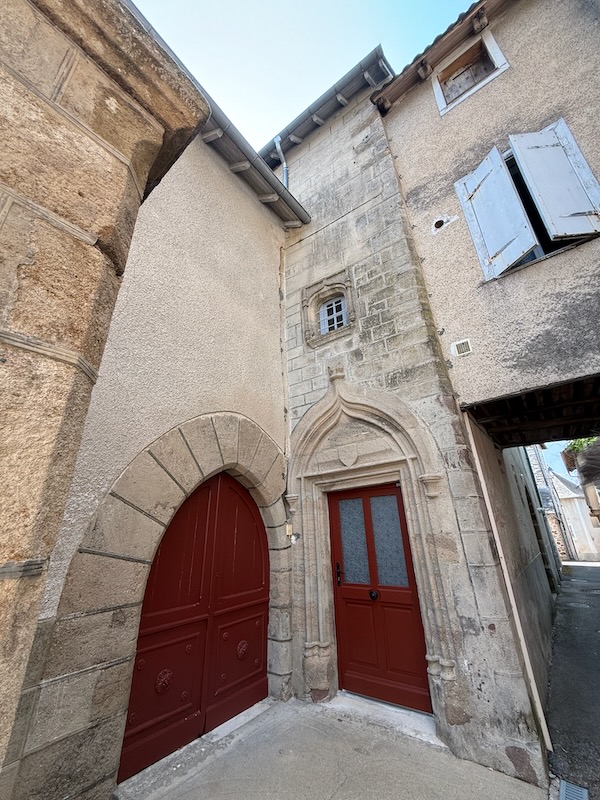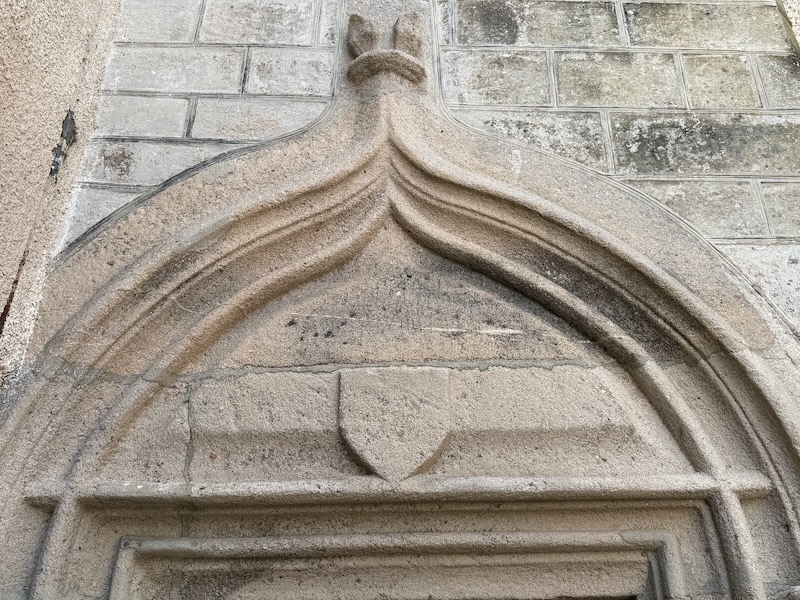Our Blog - August 2025 - England trip - Donzenac, Francec
The town of Donzenac has a medieval quarter that is very well documented/marked, with almost 20 different stops, each with a plaque that gives a little information and a QR code that gives more information. The "more information" is in French but the plaques have English, French, and German. We did a short version of the tour, picking up only a few of the items.
The village is mentioned as far back as 783 and was an episcopal lordship under the Bishop of Limoges in the 1200s. It was a fairly quiet town until World War II, when a few events happened there, linked to resistance fighters (who were murdered) and a Gestapo raid where a 13-year-old boy was tortured and killed. It is growing slightly, up to slightly over 2700 people after a high of 3400 in 1851 and then dropping to as low as 1800 in 1975. Nearby is a former slate mine, which is open for guided tours.
Donzenac's prosperity in the Middle Ages was due to its vineyards, the streams that powered numerous mills, and above all to its position on the road from Paris to Toulouse and Spain. Donzenac was also a stopover on one of the pilgrimage routes to Santiago de Compostela. The 1300's and the Hundred Years' War brought this prosperity to an end, and it wouldn't come back until the 18th century.
Although Donzenac has a "Castle Street," it never had an actual castle. Originally, there was just a fortified camp in the middle of the old town. Then fortifications were built, encircling the camp and a set of houses were built for the noble families. The shape of this old part of town has a set of circular streets around it, showing the successive extensions of the town until the 14th century.
The bell tower shows the importance of Donzenac during the medieval period, with 4 levels topped by a masonry spire. You can see the vaulted porch with the two niches on either side that contain statues of Saint Martin and Saint Andrew. The porch and niches are old but the actual statues inside the niches are works by a contemporary sculptor.
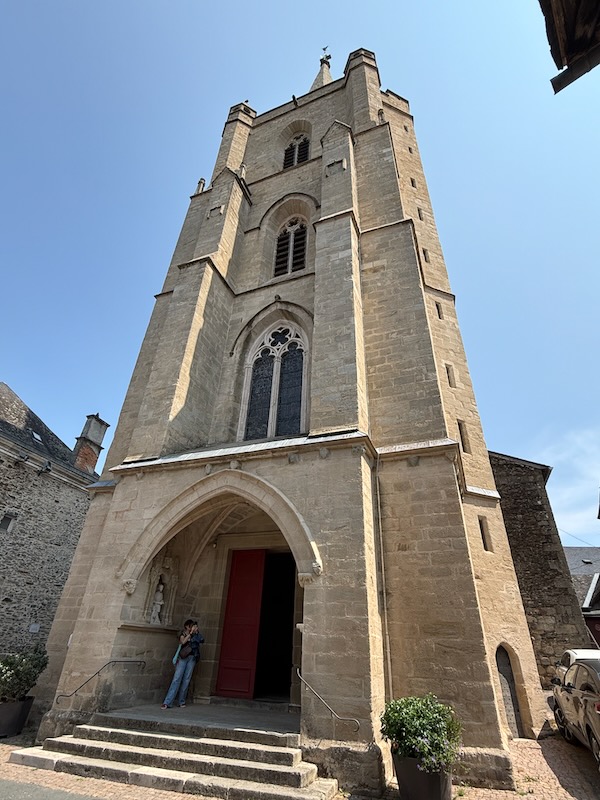
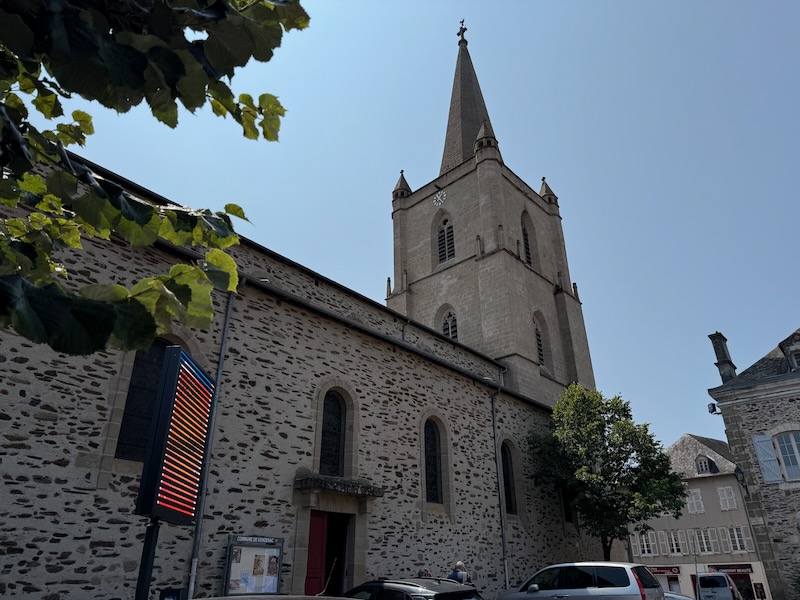
The interior of the church looks newer than you would expect from the outside, because it was rebuilt in the 19th century when the former church collapsed in 1810. The bell tower that you just saw dates from the 13th century church. A good example of this difference is actually from the next picture and the one after. This first picture is the nave of the church, rebuilt in the 19th century (notice it is very clean and white). Then compare that to the 2nd picture, which shows the interior of the bell tower, which is 13th century, and still shows the painting on the ribs and the Gothic vaults.
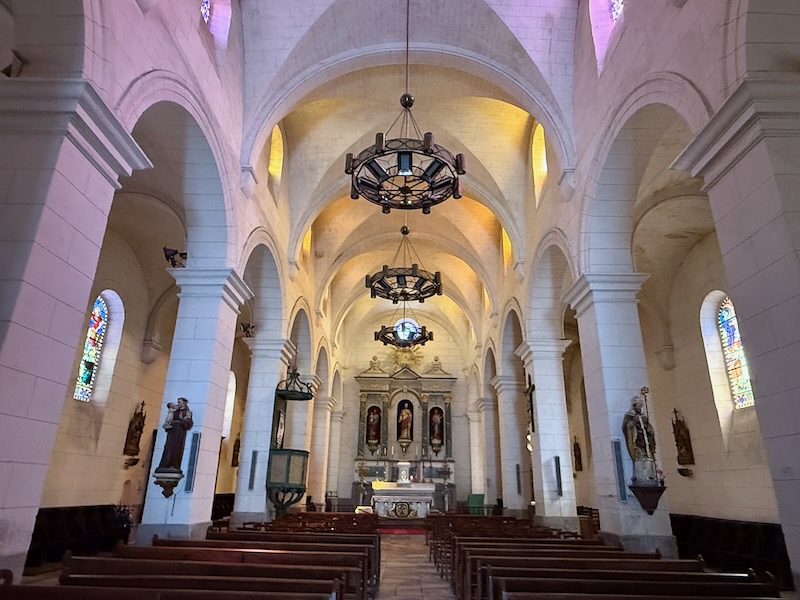
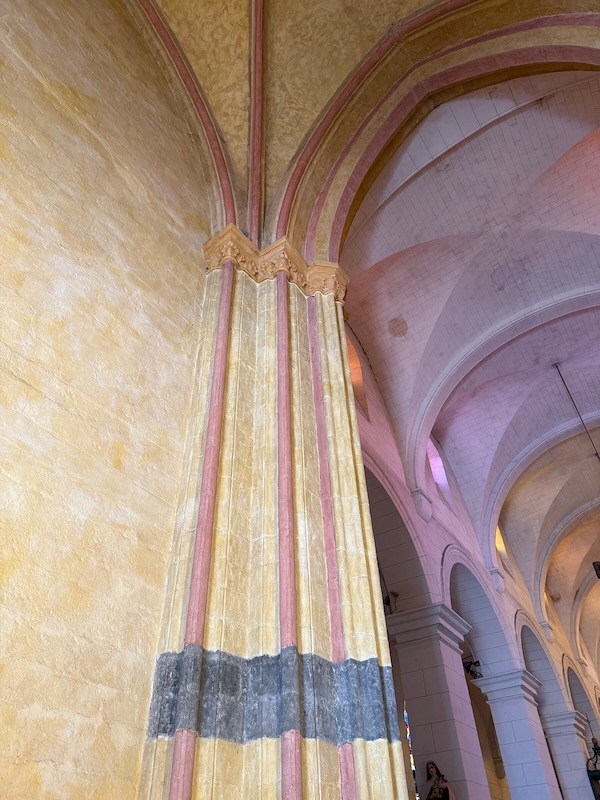
The altarpiece is nice, although it is fairly recent. To the right-hand side of this altarpiece is a chapel with what to me is a representation of Our Lady of Lourdes with a young girl praying in a cave. I've seen these in a few places around France.
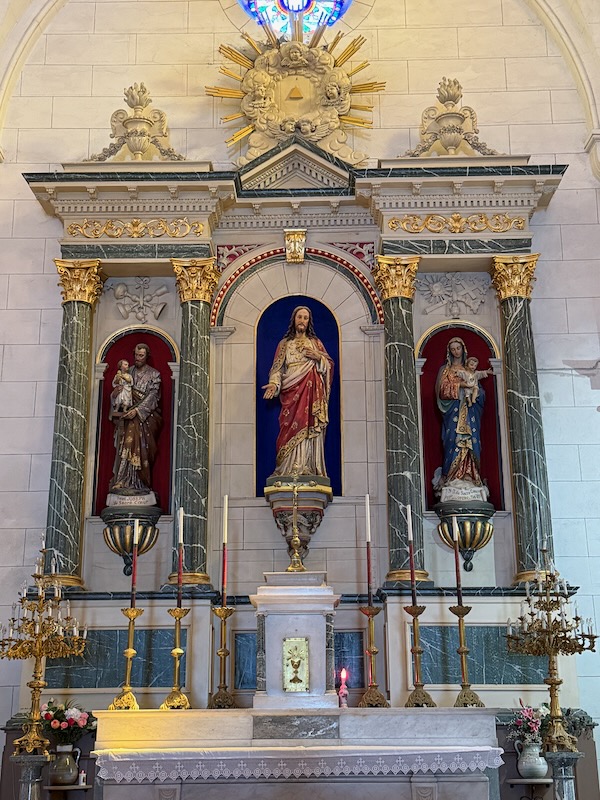

Just one stained-glass window, this one above the entry door showing the Annunciation, dating from the 1920's.
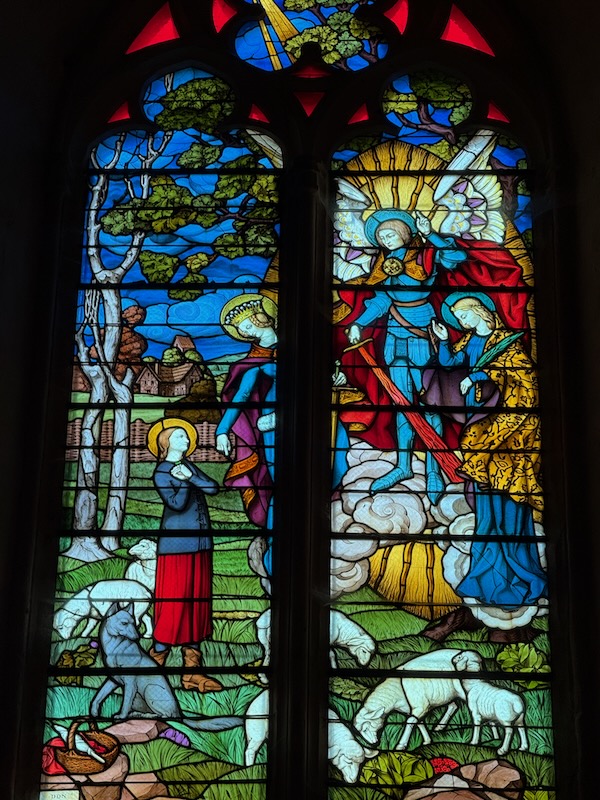
These are 3 limestone statues dating from the 14th and 15th centuries. The first is Saint Marie-Madeleine and the 2nd shows the Virgin Mary and child. You can still see the painting pretty clearly on this one. The last one is John the Baptist with a camel-hair tunic.
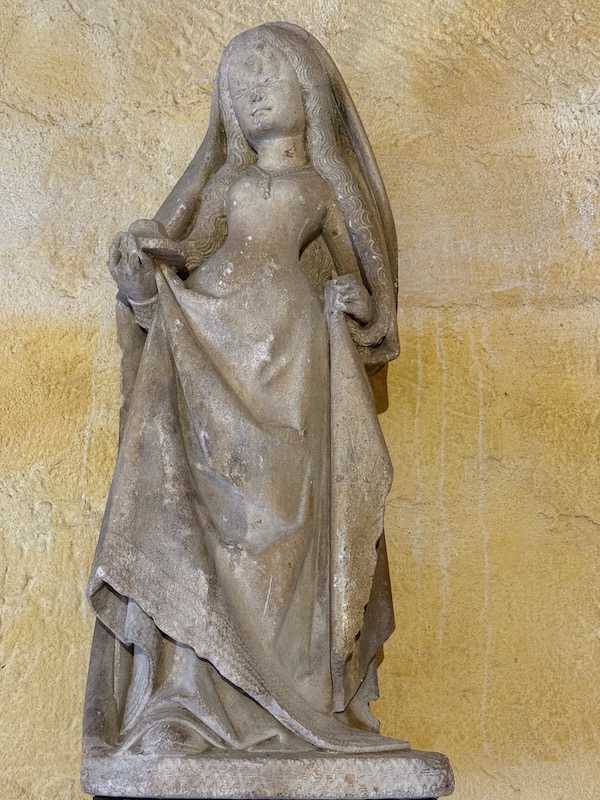
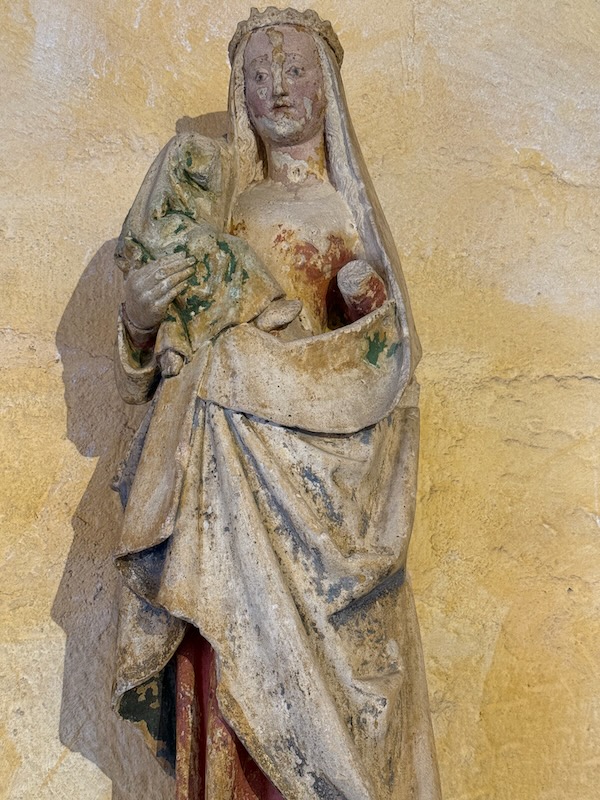
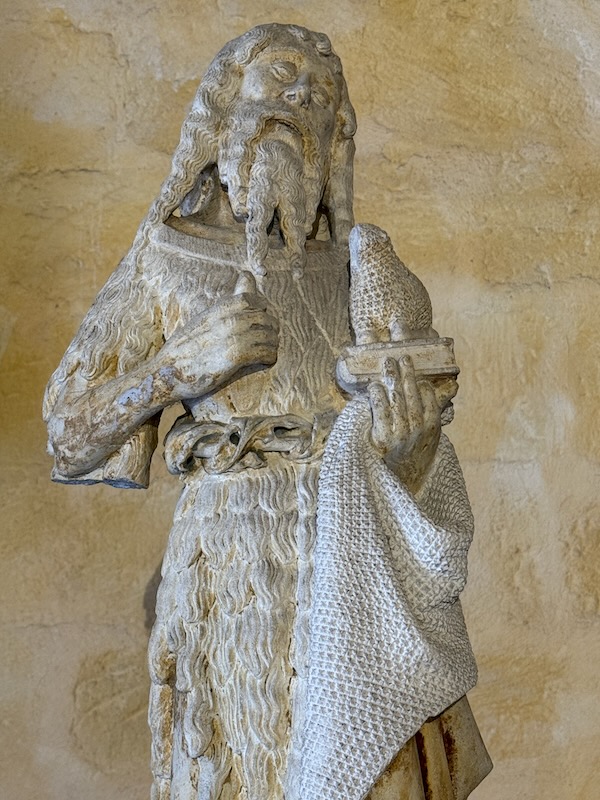
Just behind the church is a covered market area, although I'm not sure it is very old.
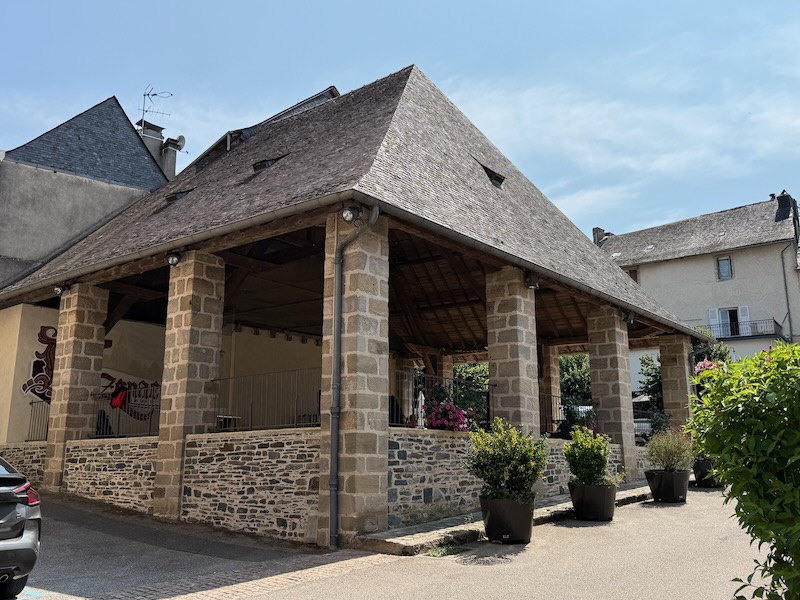

Throughout the old section of town and around the church are several half-timbered houses that date from the Middle Ages.
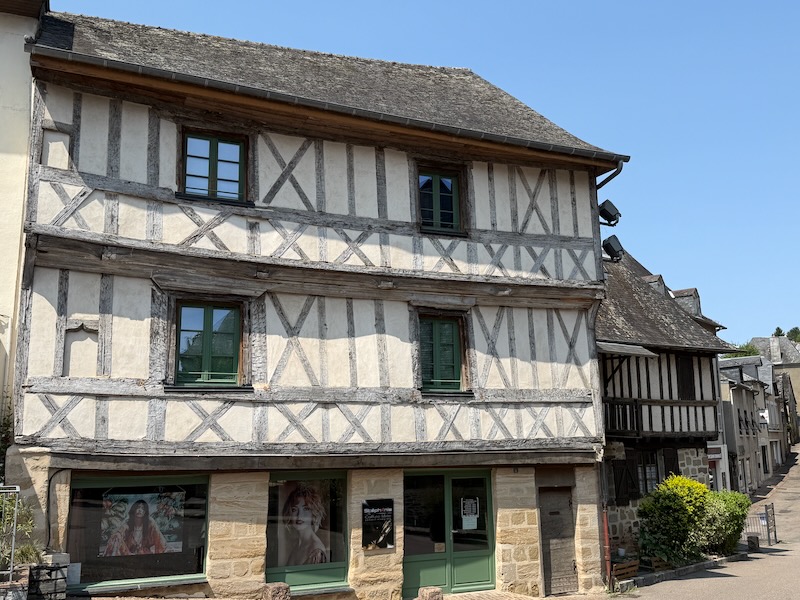
The medieval village used to have 10 gates, 3 of which remain today. This one, called the Castle Gate or Penitents Gate, leads to the oldest part of the village.
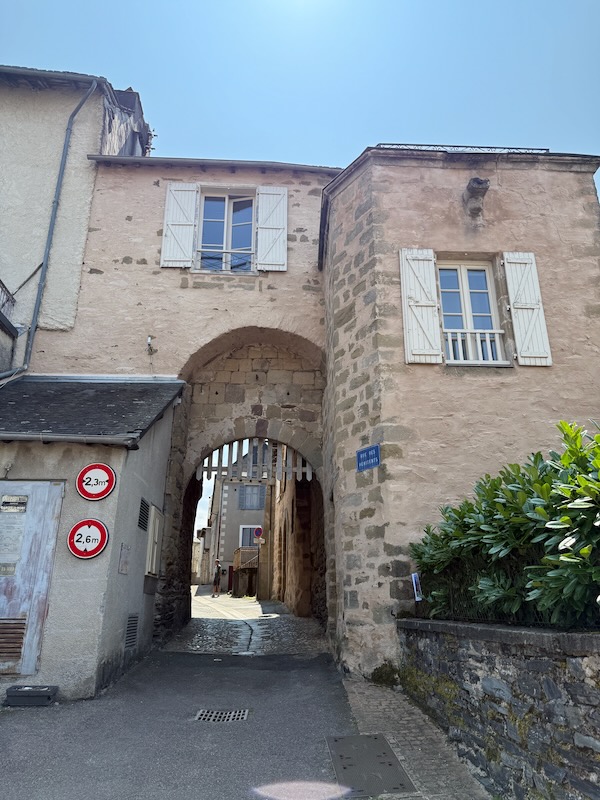
The former Chapel of White Penitents was built in 1677 on the remains of the guard house of the Chateau de la Robertie. This guard house was used up until the 15th century to defend the south ramparts of the town. When the Chateau was abandoned in the 17th century, it was was donated to the Brotherhood of the Penitents, which had been created a few years earlier (they disappeared after the First World War). Above the door is Saint Jacques de Compostelle, shown with the typical scallop shell. The Baroque altarpiece dates from the early 18th century. It now holds art exhibits.

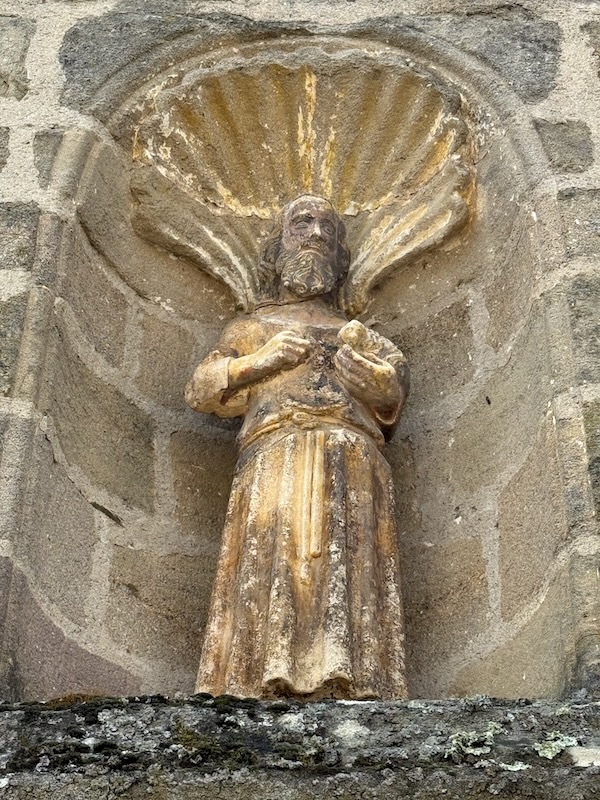
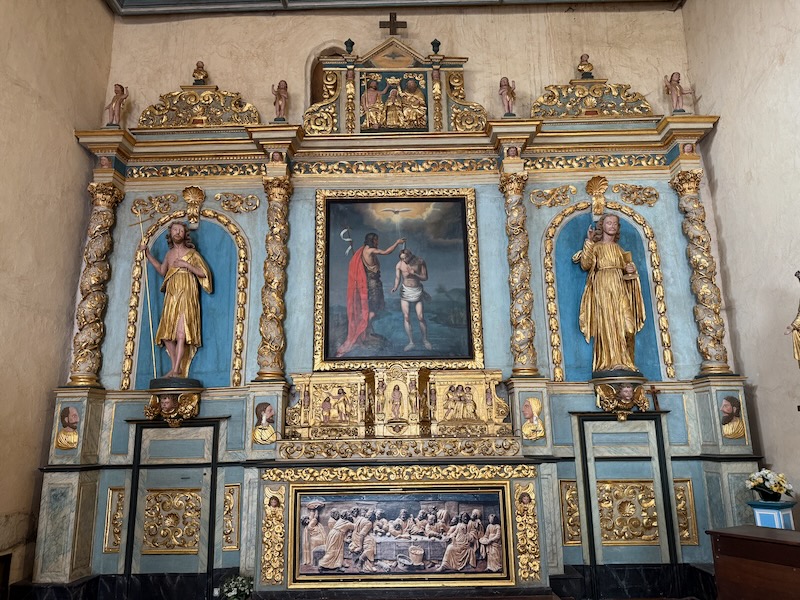
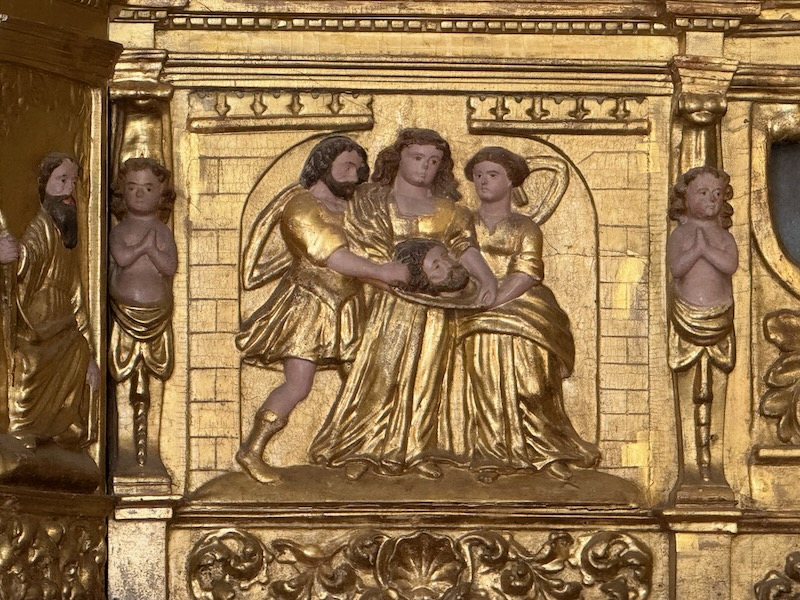
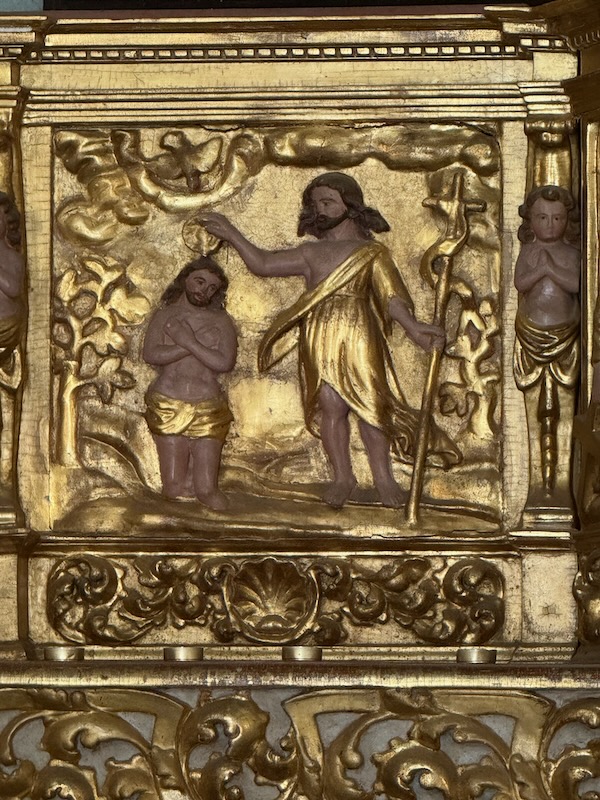
This is called the Mansion House or "Noble House", which is made up of 2 13th-century houses that were joined together and converted into a single house in the 15th century. The pointed arch doorway is quite typical of 13th-century houses and there is a shield carved on the lintel above the main door.
